Affiliate disclosure: This post may contain affiliate links. Please see our disclosure policy.
Herbal tinctures are extracts made from medicinal plants, mushrooms, or lichen. Whether made with alcohol or glycerite, homemade tinctures are a shelf-stable way to preserve the medicinal benefits of herbs for year-round use. They’re an easy way to always have natural medicine on hand at a moment’s notice.
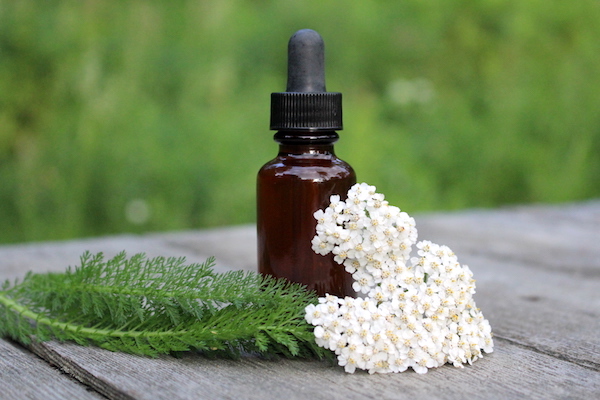
Making your own herbal tinctures is a deeply satisfying feeling, and once made, it’s incredibly comforting to know that you have shelf-stable herbal medicine ready whenever it’s needed.
Essentially, you’re distilling all of the therapeutic properties of any given plant material into a super-concentrated, super-powerful elixir that can be taken for any number of health concerns. Depending on the tincture in question, the benefits range from preventative to immune-boosting to sleep-inducing — all in a dropperful of herbal extract!
What you might not realize about tinctures is how easy they are to make. All you need to get started is your desired plant material, a solvent, and a solid 6 to 8 weeks for the extraction process to complete itself.
What is a Tincture?
A tincture is a concentrated herbal extract prepared with alcohol, a solvent that extracts the active medicinal compounds from alcohol-soluble plant matter. Tinctures are a means to ingest super-condensed herbal extracts for their medicinal properties.
The use of tinctures isn’t a new activity, people from all over the world have been making tinctures for thousands of years.
Today, the tincture market is rich with options. You could purchase a tincture for every ailment you can think of, but the prices are often high — especially when you’re buying multiple tinctures at once. Usually, tinctures are around $12 to 15 an ounce, but the same medicine can be made for pennies on the dollar.
When you make your own tinctures at home you can choose the best quality ingredients to make a potent tincture, all at a fraction of the price of a store-bought version.
Homemade tinctures are made with minimal equipment, using the leaves, flowers, roots, bark, and flowers of fresh or dried herbs and mushrooms as plant material.
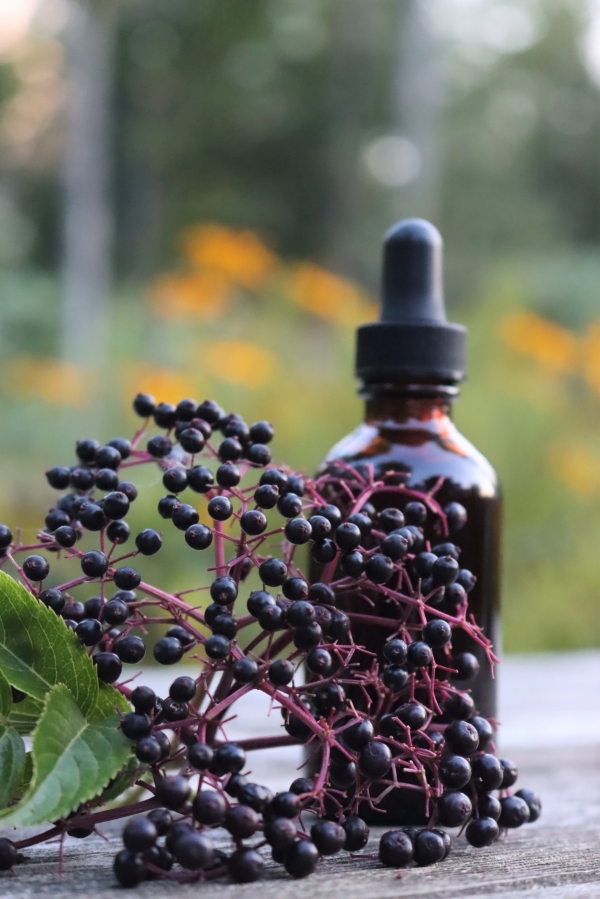
Tincture vs. Herbal Extract
You might notice the term “herbal extract” is sometimes used interchangeably with the word “tincture” when you’re reading up on the topic, but there is a difference between the two classifications.
A tincture is prepared using alcohol as a solvent to extract the desired compounds from plant material. Glycerite tinctures use vegetable glycerin as a solvent, and are generally considered part of the tincture family.
An herbal extract is an umbrella term that refers to plant material extracts made with various types of solvents including, but not limited to, alcohol, oil, honey, and vinegar.
How are Tinctures Used?
Depending on the particular extract you’re using, tinctures are taken orally or applied externally. Tinctures are dosed by the dropperful, and are often dropped directly under the tongue, where they’re absorbed into the bloodstream more quickly.
Different types of tinctures have different recommended dosages and means of ingestion. Bitter tinctures, which are taken to stimulate the appetite and relieve signs of digestive distress, are typically ingested 15 minutes before eating.
Some tinctures, like those made from lemon balm and motherwort, tend to be fast-acting, and are of the soothing variety.
Tinctures mades from adaptogenic and immune-boosting herbs and mushrooms, such as ginseng root or reishi mushrooms, must be taken continuously over a period of several weeks before their therapeutic benefits are apparent.
Not all tinctures are meant to be taken orally. Tinctures prepared with black walnut and yarrow are, among others, applied directly to the skin or mixed in with a carrier oil or basic lotion.
Topically-applied tinctures are used to treat everything from parasitic infection to eczema, and certain types can even be mixed in with misting sprays or face cream to add powerful herbal benefits (and at a fraction of the cost of commercially-made, herb extract-enriched beauty products).
Types of Tinctures
By definition, alcohol-based tinctures are the only “true” tincture, although some resources are laxer about this than others. Glycerine based or Alcohol-free “tinctures” aren’t technically tinctures, but they’re often referred to by this name since they’re pretty much equivalent in terms of how they’re used. (Technically, they’re glycerites.)
Some plant materials, such as dried mushrooms, contain high amounts of both alcohol-soluble and water-soluble compounds. When this is the case, the double extraction method is the way to go. It’s an additional step, but an easy one, and you’ll find that the result is definitely worth the (very minimal) extra time it takes.
If you prefer an alcohol-free extract, you can also make a potent glycerite tincture using vegetable glycerin — the method is almost exactly the same as a tincture with alcohol, which I’ll walk you through below.
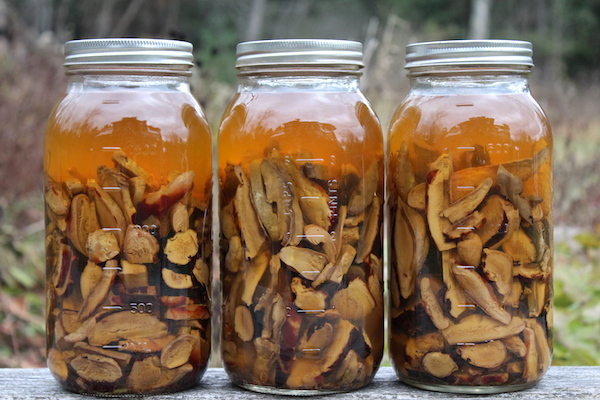
Are Tinctures Shelf Stable?
Because tinctures are prepared with ethyl alcohol they have a naturally long shelf life. Alcohol drastically slows down natural decomposition and the growth of bacteria, so if properly stored a tincture can last for a couple of years (even longer if the alcohol is 100-proof or higher).
Never use isopropyl alcohol (rubbing alcohol), it’s toxic to ingest and therefore not suitable for making tinctures — although it can be used to make herbal liniments for external use.
All of my tinctures are made using vodka. I like to use Smirnoff because it’s relatively inexpensive, but not so cheap that it’s completely unpalatable.
Some people prefer to make their tinctures with brandy or rum — pretty much any high-test alcohol can be used. Make sure you choose alcohol that’s at least 80-proof (40 percent) for making tinctures or, if you can find it, 100-proof (50 percent) or higher to ensure safe preservation.
Once the tincture is ready to be decanted, I carefully transfer the extract to a dark amber glass bottle with a dropper and store it in a darkened location away from any light or heat sources — no need for refrigeration.
If stored with care, tinctures will maintain their potency for 2 to 3 years (with some higher alcohol preparations lasting up to 5 years). The Herbal Academy has an excellent guide to the shelf life of herbal preparations, which has much more specific and detailed estimates, depending on how the tincture is prepared.
How to Make a Tincture
The first step when preparing a homemade tincture is to select your plant material.
One question I see regularly is in regards to using fresh or dried herbs, and if one is better than the other. The answer I would give is: there are advantages to choosing either medium!
Depending on where you live, fresh herbs can be found growing wild or in your garden, which makes them readily available. Fresh herbs have a high water content, which means they’re susceptible to spoilage if they aren’t used immediately after being picked. If you’re fortunate enough to have a surplus of fresh herbs, I would recommend drying them for later projects using this guide to preserving herbs.
If you’re making a tincture from dried herbs, you can use herbs you’ve dried yourself or you can buy the best-quality dried herbs. Dried herbs have a maximum shelf life of 2 years, if you aren’t drying the herbs yourself it’s important to find a source with rapid product turnover.
The main mechanism behind tincture-making is the same: put plant material in a jar, cover with alcohol, and let steep for several weeks. However, a little bit of finesse with herb to alcohol ratios will result in the most potent of tinctures.
For a tincture made with fresh leaves and flowers, finely chop or grind clean plant material (the goal is to expose as much surface area as possible). Fill a jar about 3/4 of the way with chopped leaves and flowers — don’t pack the jar too tightly.
Cover the contents of the jar completely with alcohol and seal with a lid.
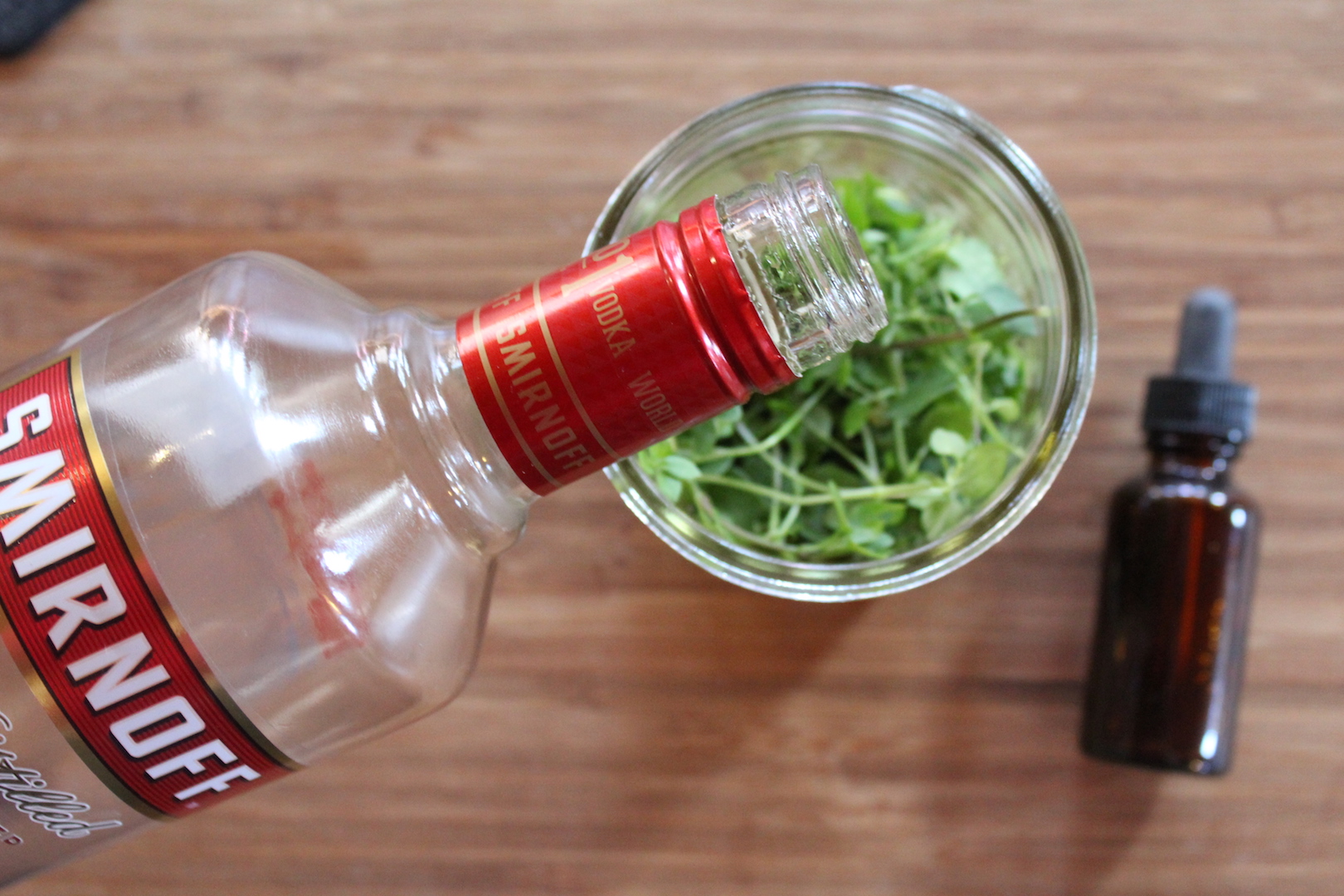
If you’re preparing a tincture using dried leaves and flowers, you’ll want to fill a jar about 1/2 of the way full with dried plant material. Dried herbs are more concentrated, and they absorb liquid and expand during the extraction process. If you fill the jar completely full, your yield will be pitifully small (but intensely concentrated).
Cover the contents of the jar completely with alcohol and seal with a lid.
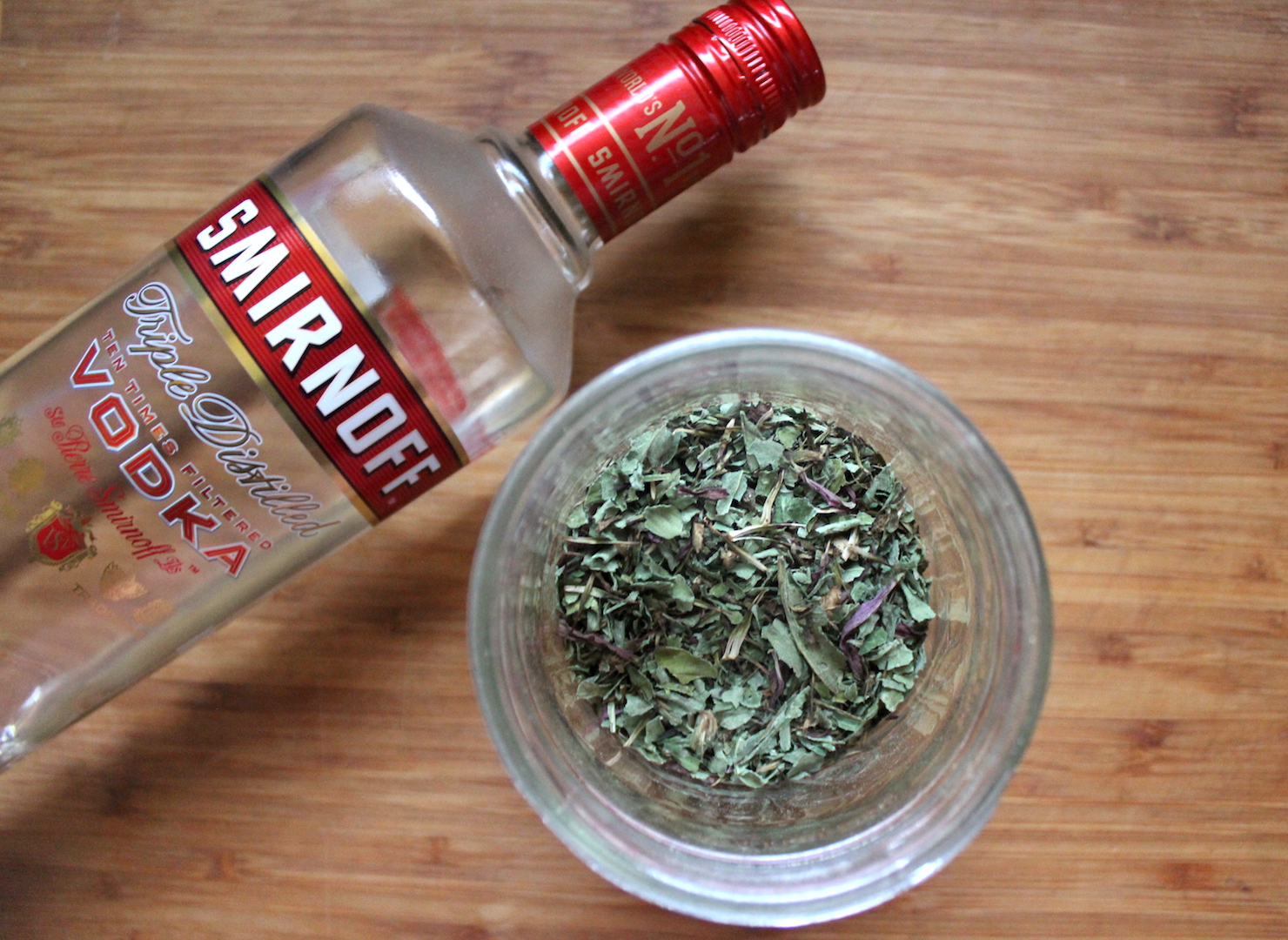
To make a tincture with either fresh or dried bark, berries, and/or roots, finely chop or grind the plant material to expose optimal surface area or to release the juice of berries. Roots and bark are especially hard to extract, so increasing surface area is important.
Fill the jar 1/3 to 1/2 full with chopped bark, berries, and roots. These materials tend to be even more concentrated and expand further than dried flowers or leaves.
Cover the contents of the jar completely with alcohol and seal with a lid.
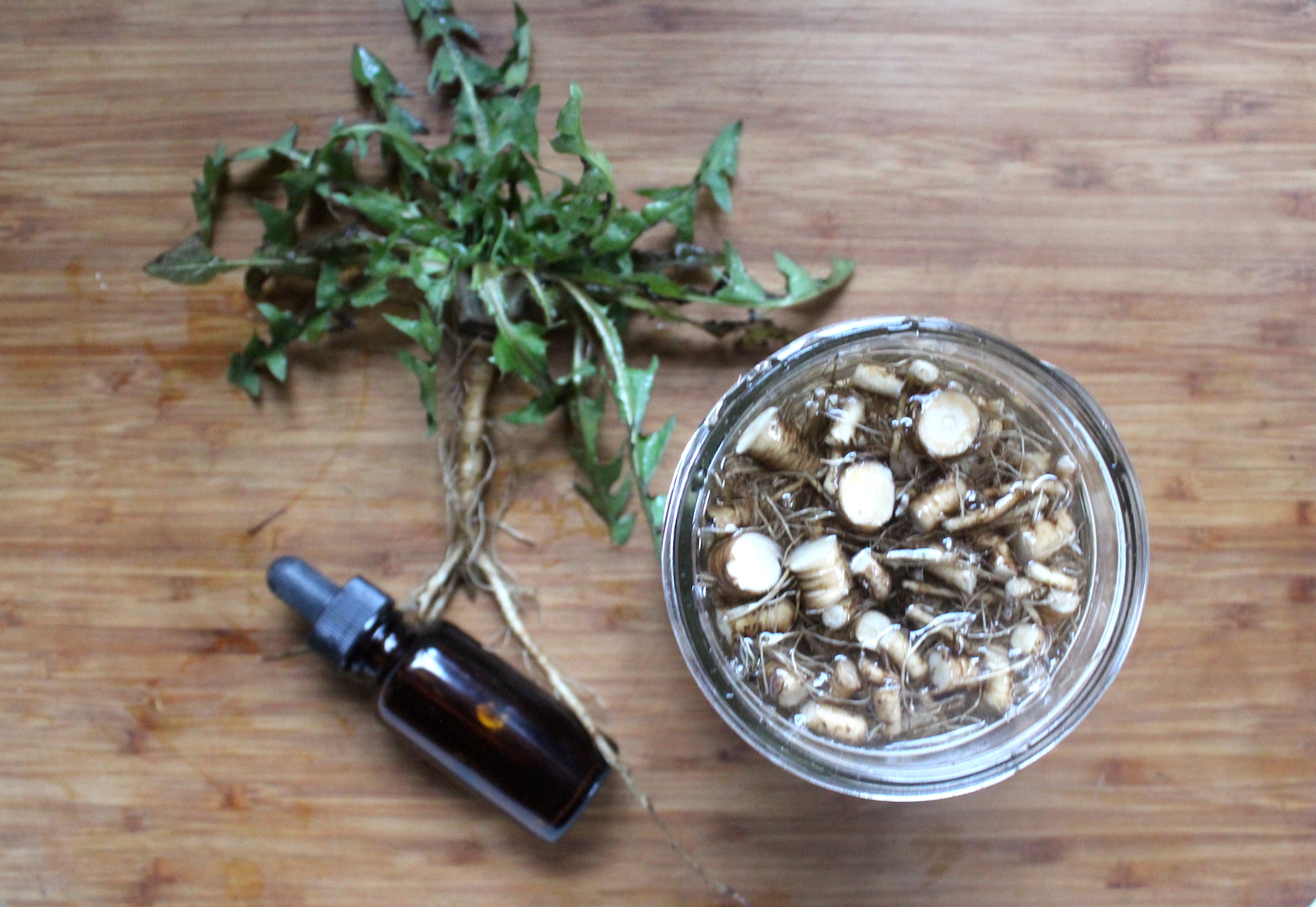
I always use a standard canning jar, but I use a plastic mason jar lid when making tinctures. There are certain tinctures that will, over time, eat through a standard canning jar lid. That’s true of both alcohol and vinegar based extracts, and there’s something about it that reacts with metal canning lids.
Some herbalists still use metal canning lids, they just place a piece of parchment paper or wax paper in between to line the lid. For me, I’m fond of Ball’s Leak Proof Lids, as they work incredibly well, don’t deteriorate (I’ve been using them for years), and don’t ever leak even when you’re vigorously shaking the jar. They come in regular-mouth and wide-mouth versions.
Most tinctures need to sit for a period of 6 to 8 weeks before they can be used, during this time the alcohol extracts beneficial alcohol-soluble compounds found in the plant material.
Store developing tinctures in a cool, dry place away from light. Give them a good shake every couple of days, keeping an eye on alcohol levels. If at any point it appears the alcohol level is getting lower, add more to the jar to completely cover the plant material to prevent unwanted mold growth.
When you’re ready to bottle your tincture, it will need to be strained first. The easiest way to do this is to line a funnel with a cheesecloth, placing the tip of the funnel directly into a dark amber glass bottle.
I often skip the cheesecloth and just use a fine mesh strainer, which is usually fine enough for most tinctures. If you’re making a tincture with particularly fine material, like pine pollen tincture, definitely go with cheesecloth.
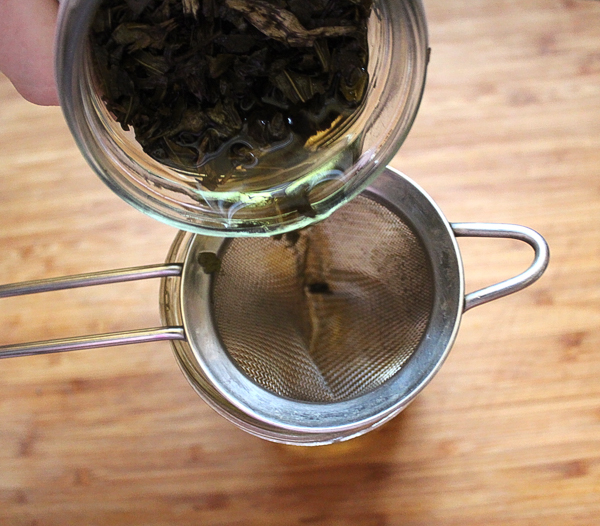
How to Make A Tincture without Alcohol
If you’re abstaining from alcohol for any reason you can still make a tincture using a different menstruum. A menstruum is a term that refers to the solvent chosen for making extracts.
Food Grade Vegetable Glycerine has been used as a solvent to make tinctures called glycerites for close to 200 years. It has a syrupy texture and sweet flavor, making it an excellent choice for tinctures that will be ingested by children.
Most recipes for glycerite tinctures are made with 75 percent vegetable glycerin and 25 percent water, resulting in an herbal extract with a shelf life of 14 to 24 months.
You can also use vinegar as a menstruum when preparing an herbal extract — I like to use apple cider vinegar as a solvent because it has the best taste, but almost any kind of vinegar will work. As long as the tincture is made with no less than 5 percent vinegar, it’s generally shelf-stable for a minimum of 6 months (usually longer).
Like alcohol-based solutions, tinctures made with glycerine or vinegar are made by soaking herbs or mushrooms in the menstruum for several weeks to extract therapeutic and medicinal properties.
Common Herbal Tinctures
Tinctures can be made from most types of medicinal plants or mushrooms, but the specific benefits of each herbal extract will depend on the specific herbs used. Here are a few of the most common types of homemade herbal tinctures, along with their benefits:
Black Walnut Tincture
If you have black walnuts to harvest, a homemade black walnut tincture is a great way to use those otherwise inedible walnut husks that would normally be discarded. Black walnut tinctures are applied topically and are prized for their anti-fungal and anti-parasitic properties thanks to a natural abundance of tannins.
Tinctures made from black walnut husks are a rare source of land-based iodine, making them a good tincture to have on hand for disinfecting wounds and irritated skin.
My post about the benefits of black walnut tincture provides all the instructions you need to make your own potent tincture.
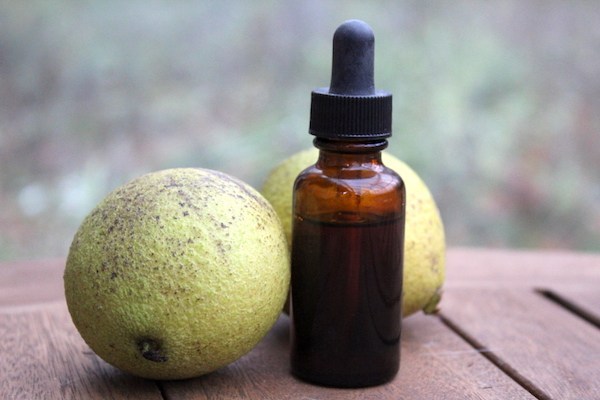
Burdock Tincture
Burdock root has long been celebrated for its anti-inflammatory effects, and studies are finally showing the numerous health benefits behind this powerful herb.
Burdock tincture has been a lifesaver for me on many occasions, especially when I’ve had swollen lymph nodes and a subsequent sore throat — the relief I’ve felt after taking a burdock tincture has always been swift, and it’s a treatment I would recommend to anyone.
Here is a guide that covers how to make burdock root tincture that can be used to fight inflammation and indigestion. I also have instructions on how to make and use burdock vinegar (a tincture-like extract without alcohol), which is my husband’s favorite way to use burdock.

Dandelion Tincture
The mighty dandelion once again proves itself as a valuable medicinal herb, especially when its roots are used to make a powerful tincture. Dandelion tincture has many applications, including its use as a digestive bitter to be taken before or after meals to combat the discomfort of gas or heartburn.
Dandelion tinctures are a diuretic and can be taken therapeutically to treat UTIs and relieve water retention. Dandelion has also been studied for its anti-diabetic properties, which are related to the plant’s numerous anti-inflammatory and anti-hyperglycemic characteristics.
This guide will walk you through the process (and benefits) of making dandelion tincture.

Echinacea Tincture
Echinacea is a well-known immune-booster, with studies showing it can potentially cut the duration of seasonal colds short while also lowering the chances of catching the common cold.
You can make your own echinacea tincture using fresh or dried echinacea (I usually buy dried echinacea online for making tinctures, it’s still far less expensive than buying commercially-made echinacea tinctures or supplements).
All parts of the plant are used for making tinctures, including the roots, leaves, stems, and flowers.
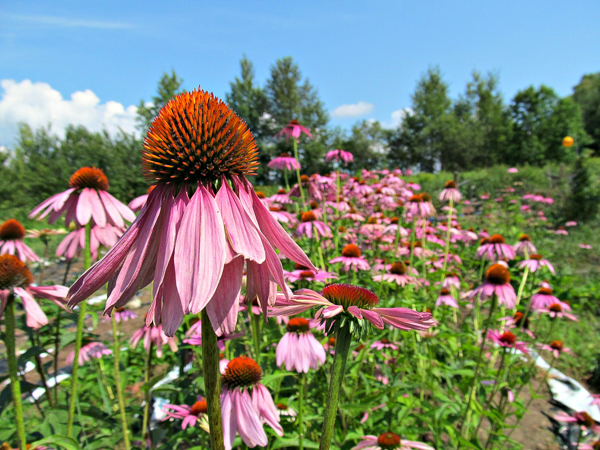
Elderberry Tincture
Elderberries are a common herbal remedy for flu symptoms and I’m always grateful to have an elderberry tincture on hand when flu season rolls around. These antiviral effects are backed by science, a study conducted in 2019 reported that elderberries directly inhibit the flu virus’s entry and replication in flu cells.
We grow elderberries from cuttings on our land, and we always have a good crop of fresh berries. I tend to save the fresh berries for making elderberry pie and elderberry syrup. I usually buy dried elderberries online for making elderberry tincture.
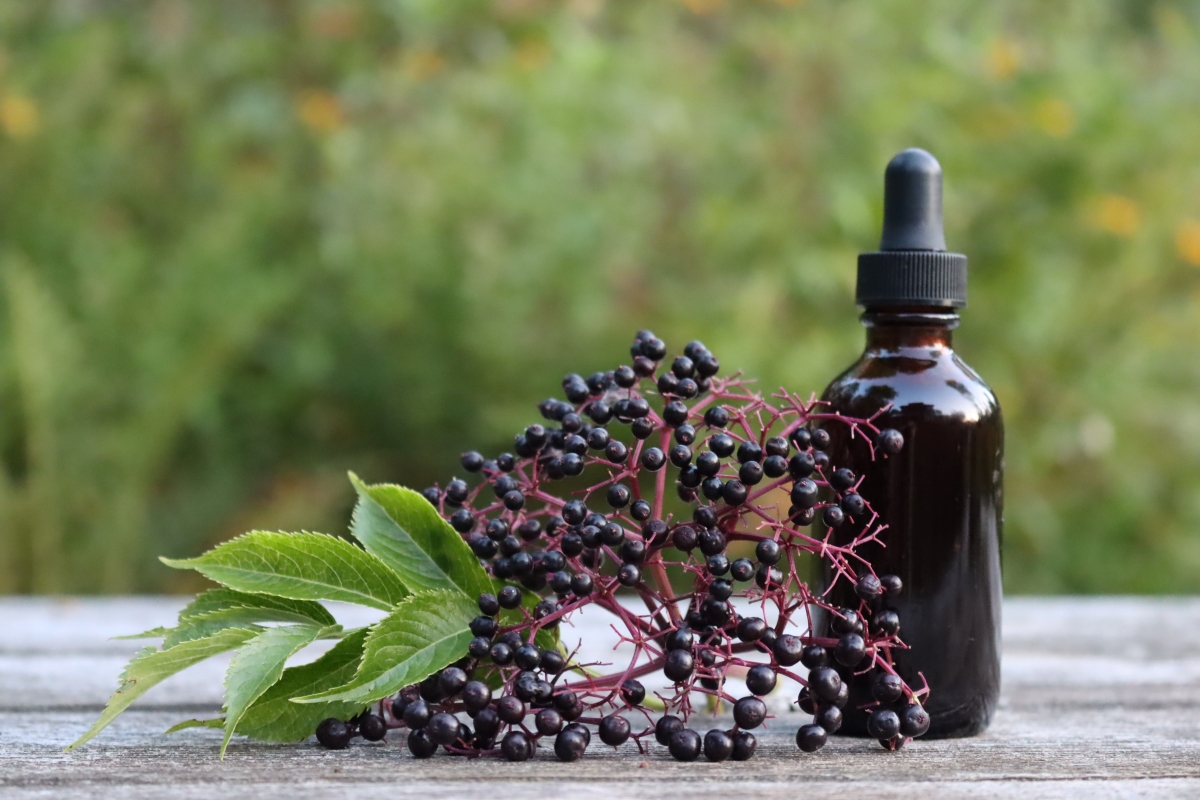
Lemon Balm Tincture
With its pleasing citrus aroma, fresh or dried lemon balm is an ideal choice for a homemade tincture that wears many hats. Lemon balm tincture has a wide variety of uses, and I tend to use it as a sleep-aid, a soothing relaxant, a stress reducer, and an upset stomach-tamer (sometimes all in one!)
Besides homemade tinctures, I use lemon balm for literally dozens of other things throughout the summer. Making a medicinal lemon balm mead (honey wine) is just yet another way to use alcohol to extract and preserve the benefits of herbs.
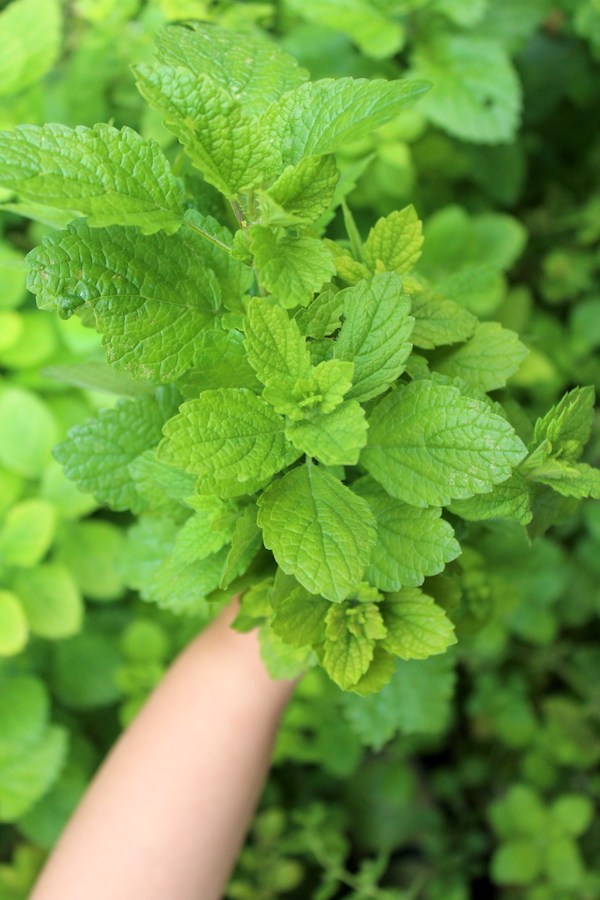
St. Johns Wort Tincture
St. John’s wort is a popular tincture choice for treating symptoms of ADHD, depression, and anxiety. The flowers of St. John’s wort are typically used for making tinctures, and the herb is thought to have a similar mechanism to SSRI (selective serotonin reuptake inhibitor) antidepressants.
A fairly recent review of studies on St. John’s wort showed that it consistently worked better than placebos when it was used to alleviate symptoms of mild and moderate depression.
Because of the herb’s potential effect on serotonin levels, anyone who has been diagnosed with bipolar disorder or other mental illnesses that counts mania or psychosis as possible symptoms should avoid taking St. John’s wort.
We also use st. Johns Wort to make a herbal infused oil and herbal healing salve, which is ideal for topical use to treat injuries and nerve complaints.
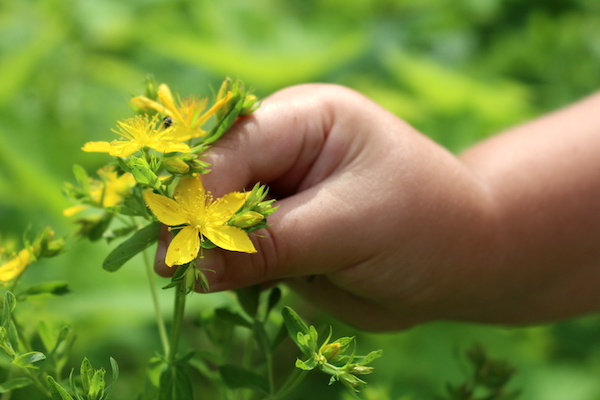
Valerian Tincture
Valerian root is a well-known and well-loved sleep aid, and in tincture form its therapeutic benefits are even more effective. Scientists hypothesize that valerian root works by increasing the chemical GABA (gamma aminobutyric acid) in the brain, similar to the mechanism used by anti-anxiety medications.
Due to the sleep-inducing properties of a valerian tincture, avoid taking it in combination with alcohol and other sedatives.
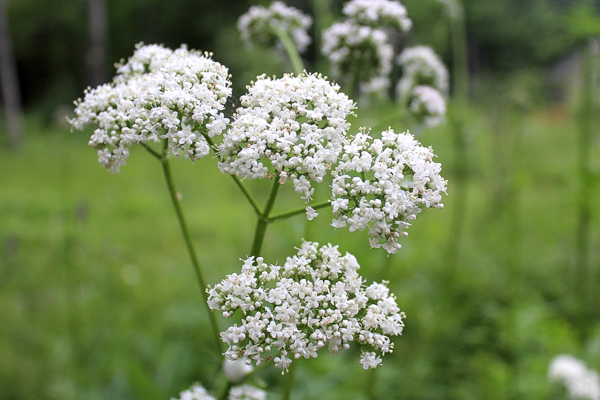
Choosing Herbs for Tinctures
Beyond these common tinctures that we make every year, there are all manner of other alcohol extracts of herbs. It really just depends on your therapeutic goals.
Be aware that not all herbs have medicinal constituents that are alcohol soluble, so do your research before trying to make a new herbal tincture. Some herbs also don’t mix well with alcohol, so be sure you choose a herb that has an established history for use in tincture form.
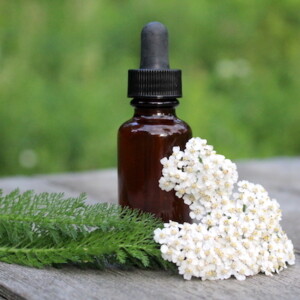
How to Make a Herbal Tincture (with or Without Alcohol)
Equipment
Ingredients
- Fresh or dried plant material prepared as directed below
- Vodka or other high-proof alcohol or vegetable glycerin if making an alcohol-free tincture
Instructions
- Fill a clean, empty mason jar with fresh or dried plant material using the measurements provided below as a guide.
- Cover the plant material with alcohol, making sure the contents of the jar are completely covered. If you're preparing a glycerite tincture, cover the plant material completely with a preparation of 3 parts glycerin to 1 part distilled water.
- Screw the lid on tightly and shake the contents of the jar. Place in a cool, dry location away from light, allowing the extraction to occur over the next 6 to 8 weeks.
- Give alcohol-based tinctures a shake every few days; glycerite tinctures should be agitated every day. If solvent levels appear low at any point, add more to cover the plant material.
- Once the tincture is ready to be decanted, line a funnel with cheesecloth and place the tip of the funnel into the neck of a dark amber glass bottle. Pour the solvent and the plant material into the funnel, pressing to make sure all of the liquid is extracted.
- Label the tincture with its contents, date of production, and suggested usages. Store in a cool, dry area away from light.
Notes
Homemade Herbal Remedies
Looking for more homemade herbal remedies?
Foraging Wild Herbs
Many herbs that are perfect for making tinctures can be found safely in the wild if you know how to identify and forage common medicinal herbs.
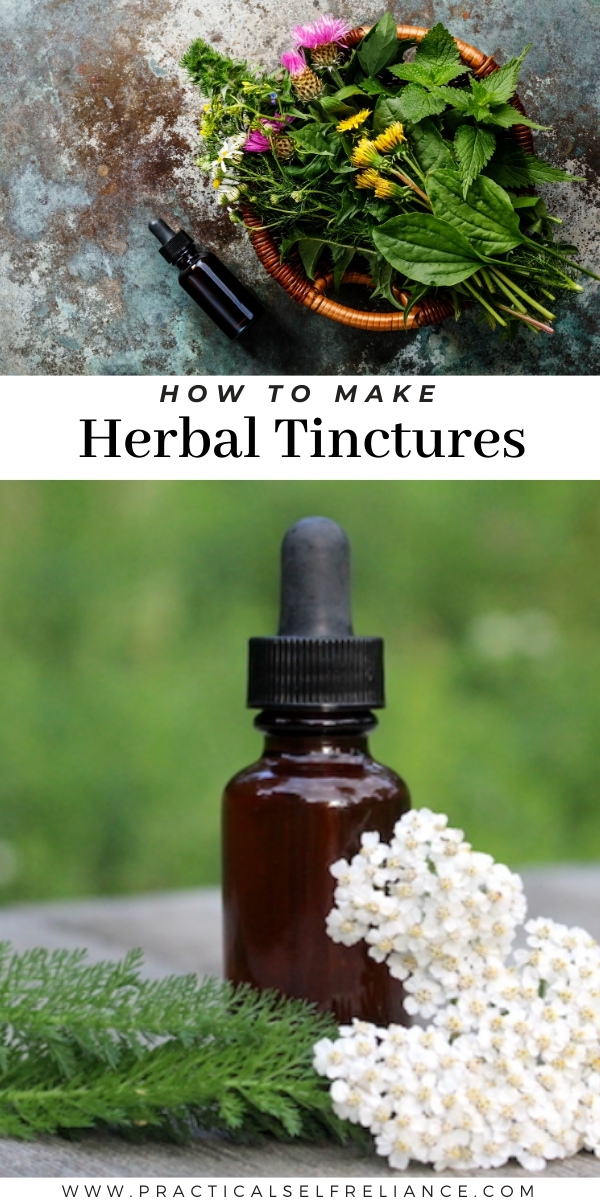
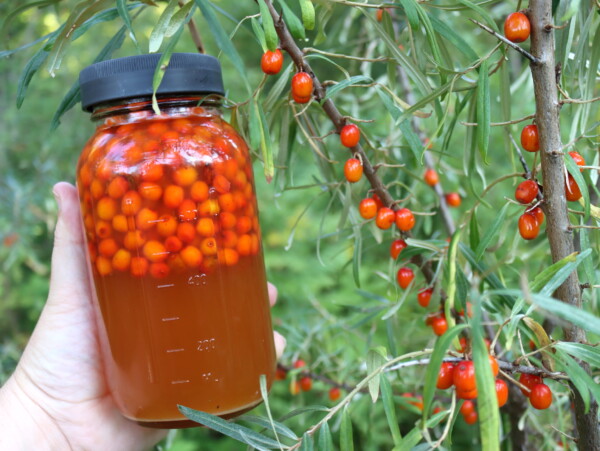
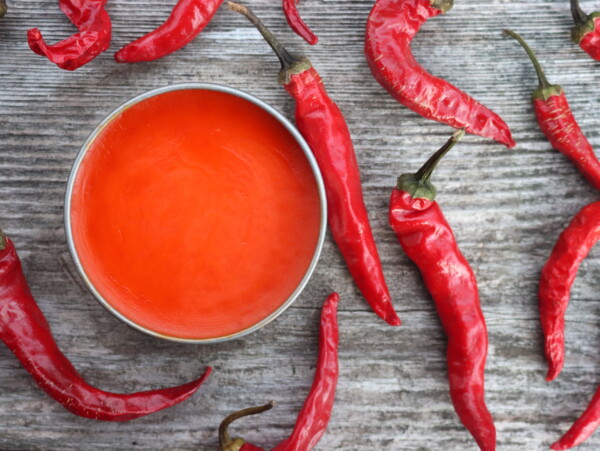
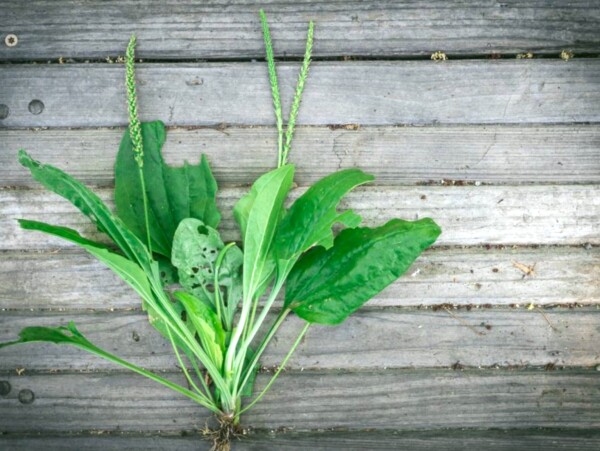

I have been trying on my own with alcohol in very small quality, just for personal use.
I have been following and been practicing but just in very small quality for personal usage. I used alcohol.
This was so helpful for me . I am working on building my home apothecary and am just getting into tinctures. Have done the oil infusions and salves . Im excited about this step !
How do you use Goldenrod?
We don’t have a post on goldenrod but I found a great article here from edible wild food that has some good information. Let us know if you find some other good information.
https://www.ediblewildfood.com/goldenrod.aspx
love learning something new everyday 😀
Me too!
If these are made with alcohol, can they be used on children? Also, how do you determine dosing on homemade tinctures?
That’s really up to you. I personally wouldn’t have an issue giving them to my children. The amount of alcohol in a does of tincture is very small and typically not much more than what you would find in an over-the-counter cough syrup.
While glycerin is useful for those who cannot tolerate alcohol, it must be noted that it is alcohol that enables the tincture to cross the blood-brain barrier. That is one of the key differences between the two styles are preparing medicinal herbs.
I have a lot of Chaga on birch here, can i make tincture like you root and bark recipies?
Chaga is often brewed and made into a tea but it can be made into a tincture as well. Here is a post that we have on chaga. https://practicalselfreliance.com/foraging-and-using-chaga-mushroom/
My niece suffers from excruciating pain & cramps during her mensural cycle. She has been taking prescription meds for 15 years to help alleviate the pain. I stumbled onto the website earthclinic.com and looked for natural remedies because she wanted to stop prescription meds. The suggested cure was Blackstrap Molasses. She tried it and for the last 2 months has been basically pain free or tolerable pain. She says she will never be without it again. She cannot believe something so simple could have been helping all of these years. I asked how much she took and she said I chugged some because I hurt so bad. Then she uses it as a sweetener in her coffee every morning. She says it is a lifesaver!! May help with cyst pain.
This is incredible information. Thank you so much for sharing.
Hello. I’ve recently started following your IG a d I love it. Thanks for all the great informative tips and recipes. I’m wondering about your experience with Heal-All tincture for anxiety for someone who doesn’t want to take Rx meds. I have tons growing in my woods and back yard and would love to give it a try. Thanks in advance for your help.
Heal-All or Self-Heal has a lot of great benefits but I don’t have any personal experience using it for anxiety. Do you have any information that it might be useful for that?
Isn’t black walnut taken internally for parasite control?
Yes, black walnut tincture has commonly been used for this purpose. You can find a post about that here: https://practicalselfreliance.com/black-walnut-tincture/
Miss Ashley, I have a Question that i need an answer to, hope you can help with that, the question is, my grand-daughter is 22 and has a cyst on her ovary, she went to her Doctor today 2-26-21, and they said, “she should take some Advil for her Pain”. my question is, Is there any NATURAL pain relieving Substance, we could use, (or make) instead of Big Pharma’s junk?
if you could advise me on such a pain reliever, please let me know in an email. Your best guess, is way better than mine. lol
thank you C
I’m definitely not a doctor or a medical professional of any kind…but I also had cysts on my ovaries in my 20’s and I know how that feels. Not fun!
From my experience, fish oil is really helpful, as it’s a natural anti-inflammatory and dramatically decreased my discomfort within about a month of starting it. My doctor recommended relatively high doses, and I was taking 4 capsules of Nordic Naturals Ultimate Omega a day. I’d have her check with a doctor on this first, as that’s double their standard dosage I believe, but it was really helpful for me. I know fish oil and omegas can have other side effects, as I think they impact other medication too (but I wasn’t taking anything else, and have no other health issues, so it wasn’t a concern for me)…still, definitely have her do some research before trying, and double check with a doctor. But anyhow, that’s what worked for me and I hope your granddaughter is able to find some relief.
Kratom. Dried leaves. Greens are the best. 100$ a kilogram. Legal in most states besides Indiana. 1g has analgesic and larger dosages sedative effects along with overall euphoric numbness similar to Vicodin or percocet. This is a plant in its ground up, dried leafy, natural state. No synthesis necessary to obtain all of its benefits, and consequences.. as with all opiates it will cause withdrawal symptoms if discontinued abruptly (sleeplessness, agression, RLS, cold sweating, nausea) but all of these symptoms are only as severe as the dose and time period of use. 3 months everyday 1-2 doses is not a big deal for most. Heroin addicts using this to taper off the needle experience a way longer and stronger withdrawal period (obviously) constipation is another serious side effect. Be mindful this slows down bowl motility. If there’s an impaction (clogged) use an enima before trying stool softeners. (F#*k big pharma) Kratom isnt a panacea, but it’s goddamn close 😉 I (mofo) wish you and your daughter the best prognosis with her ovarian cysts. (You can also find and make Kratom as a tincture (ie k-shot brand))